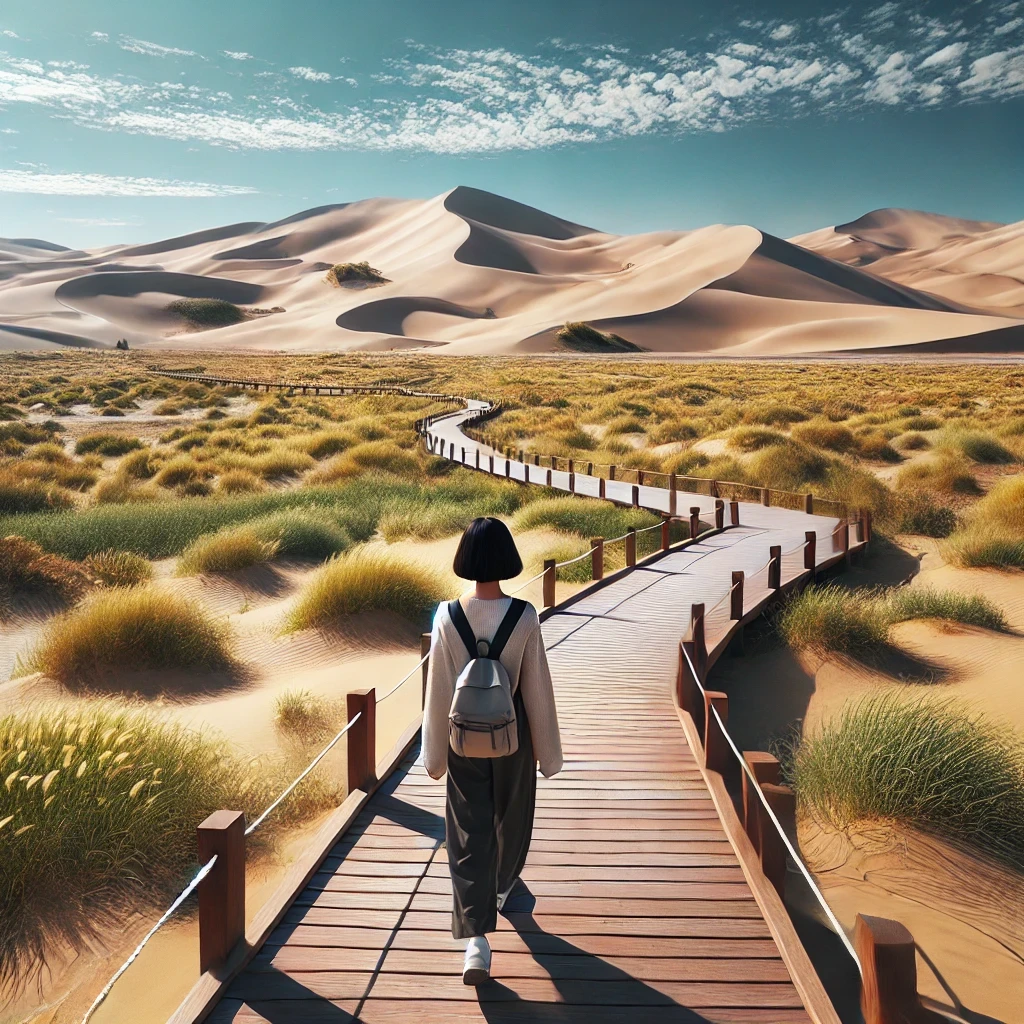ChatGPT:
The Curonian Spit National Park in Lithuania is a UNESCO World Heritage Site renowned for its striking natural beauty and unique ecological and cultural features. It occupies the northern part of the Curonian Spit, a narrow, curved sand-dune peninsula separating the Curonian Lagoon from the Baltic Sea. The Lithuanian portion covers about 52 kilometers of the total 98-kilometer-long spit, with the southern part belonging to Russia’s Kaliningrad region.
Geographical Features
1. Sand Dunes: The Curonian Spit is dominated by some of the highest sand dunes in Europe, reaching up to 60 meters. These dunes shift and move due to winds, creating a dynamic landscape.
2. Forests: Large parts of the spit are forested, featuring a mix of pine, birch, and alder trees. Many of these forests were planted to stabilize the dunes.
3. Lagoons and Wetlands: The spit features lagoons, marshes, and wetlands, which support diverse plant and animal species.
4. Beaches: The Baltic Sea side has pristine sandy beaches, while the lagoon side is calmer with reed beds.
5. Villages: Charming fishing villages, such as Nida, Juodkrantė, and Preila, dot the Lithuanian section of the spit, adding cultural interest.
Origin and Development
• Formation: The Curonian Spit was formed around 5,000–6,000 years ago due to sediment deposition from glacial meltwaters. Winds and waves sculpted it into a barrier between the sea and lagoon.
• Human Impact: Since ancient times, humans have inhabited the spit. By the 17th century, deforestation for firewood and shipbuilding led to extensive erosion, causing “wandering dunes” to bury villages.
• Restoration: In the 19th century, efforts were made to reforest the spit to stabilize the dunes. These efforts, led by Prussian foresters, were largely successful and transformed the landscape into what it is today.
Cultural Significance
1. Fishing Culture: The spit has long been home to fishermen, whose traditions and folklore are preserved in local museums and festivals.
2. Amber Road: Historically, the spit was part of the ancient Amber Trade Route, linking the Baltic to the Mediterranean.
3. Tourism and Art: Since the 19th century, the region has attracted tourists and artists, particularly in Nida, where a German art colony was established.
Biodiversity
The park is a haven for wildlife, with over 900 species of plants and numerous bird species, making it an important stopover for migratory birds on the East Atlantic Flyway. It is also home to rare species such as the European pond turtle and gray wolf.
Modern Development
Today, the Curonian Spit National Park is a well-managed protected area emphasizing sustainable tourism. Visitors can explore hiking trails, dune observation points, and cultural landmarks like the Hill of Witches in Juodkrantė, a collection of wooden sculptures inspired by Lithuanian folklore.
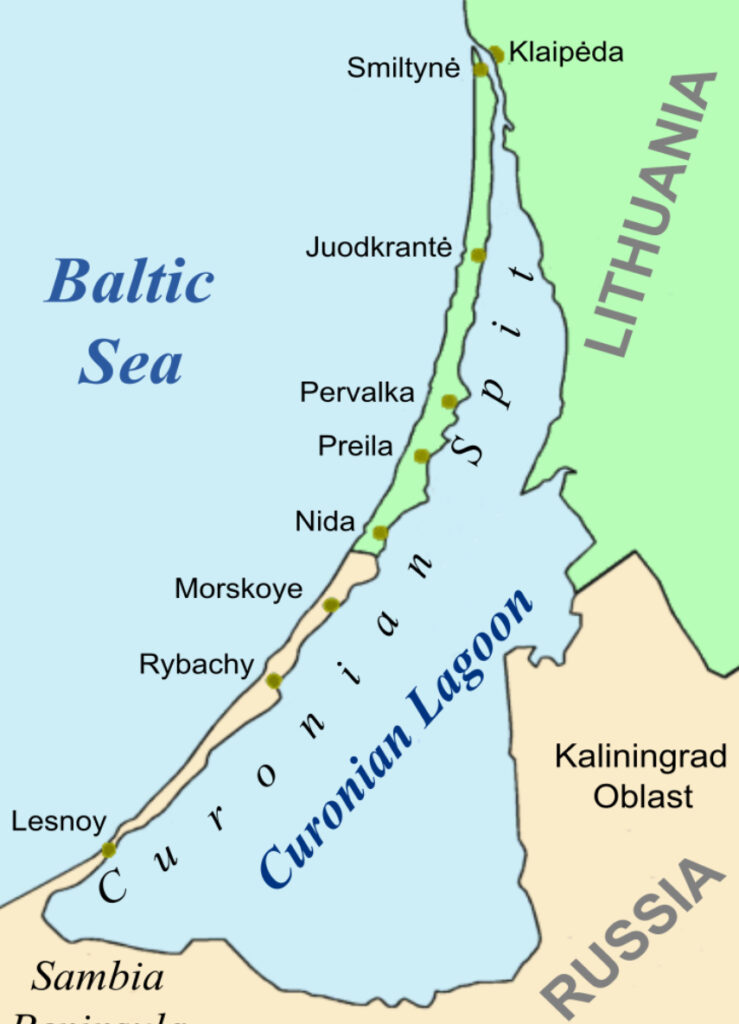
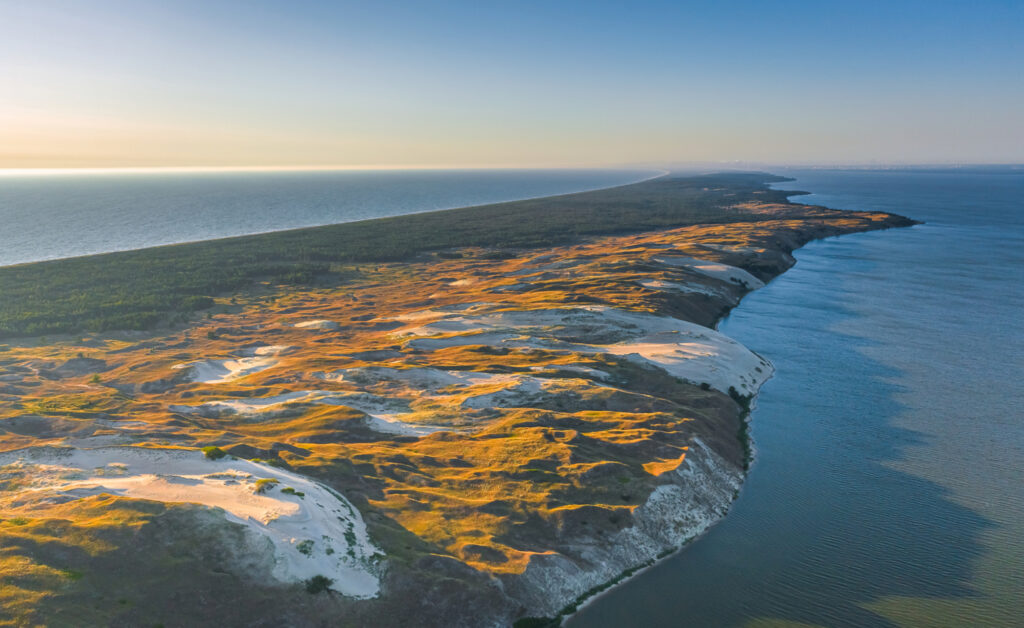
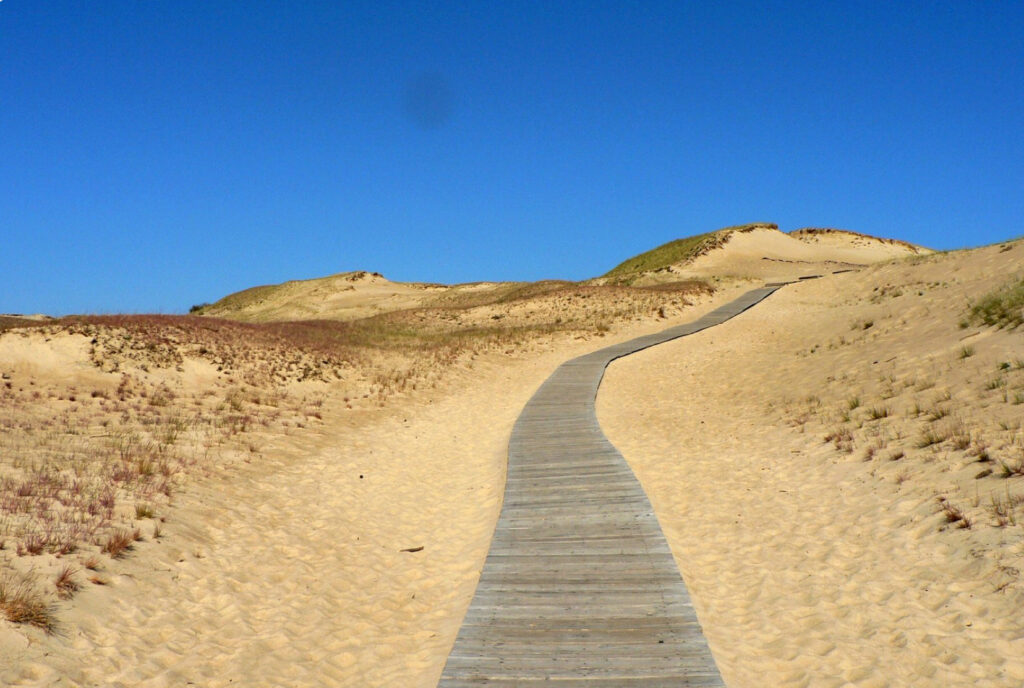
The Amber Road refers to a network of ancient trade routes that connected the Baltic Sea region, rich in amber deposits, to the Mediterranean and beyond. Amber, often referred to as “Baltic gold,” was highly prized in antiquity for its use in jewelry, ornaments, and rituals. These routes facilitated cultural and economic exchanges between northern and southern Europe for thousands of years.
Origin of the Amber Road
1. Amber Formation: Baltic amber (fossilized tree resin) formed about 40–50 million years ago and is primarily found along the southern shores of the Baltic Sea, particularly in modern-day Lithuania, Poland, and Russia’s Kaliningrad region.
2. Demand for Amber: Amber was valued by ancient civilizations like the Egyptians, Greeks, and Romans for its beauty, rarity, and supposed magical properties. Its ability to hold a static charge (when rubbed) and its use as incense or talismans contributed to its allure.
Historical Development
1. Prehistoric Trade:
• Amber trade began during the Neolithic Period (around 3000 BCE) when early communities in the Baltic region started trading amber for other goods like salt, bronze, and flint.
• The amber traveled south through intermediary traders who exchanged it for Mediterranean luxury items.
2. Bronze Age (2000–1000 BCE):
• By the Bronze Age, amber became a staple in trade between the Baltic and Mediterranean cultures.
• Amber artifacts have been discovered in Mycenaean tombs in Greece and Minoan sites in Crete, indicating its widespread popularity.
3. Roman Era (1st–4th Century CE):
• During the Roman Empire, the Amber Road reached its peak. Romans used amber extensively in jewelry, religious objects, and household decorations.
• The Roman historian Pliny the Elder noted the high value of amber, sometimes worth its weight in gold.
• Trade routes expanded, connecting the Baltic to Roman hubs like Aquileia (Italy) and from there to the Adriatic Sea, where amber reached other parts of the empire.
4. Medieval Period:
• Trade routes diminished in importance during the early Middle Ages but persisted, with amber continuing to be a valuable trade commodity.
• In the Teutonic Order’s territories, amber was heavily controlled and taxed, emphasizing its continued value.
Geographic Route
The Amber Road had multiple branches, but the primary route included:
• Baltic Region: Starting in present-day Lithuania, Latvia, and Kaliningrad, where amber was collected.
• Central Europe: Passing through Poland, the Czech Republic, and Slovakia via the Moravian Gate.
• Alps and Danube Region: Crossing the Alps or following the Danube River into Austria and Hungary.
• Mediterranean: Ending in Roman trading centers like Aquileia, from where amber spread across the empire.
Cultural Significance
• Artifacts: Amber was not only a luxury good but also held religious and symbolic meaning. Archaeological finds include amber amulets, beads, and carved figures.
• Cultural Exchange: The Amber Road facilitated the exchange of goods, ideas, and technologies between northern and southern Europe, influencing both regions.
• Legends and Myths: Amber’s mystical properties gave rise to myths, such as its association with the sun god in Greek mythology (Phaethon’s tears).
Legacy
Today, the Amber Road remains a symbol of ancient trade and connectivity. It has inspired modern tourism routes, especially in countries like Lithuania and Poland, where visitors can explore amber museums, workshops, and archaeological sites. The road’s history highlights the importance of amber in linking distant cultures and shaping the early global economy.
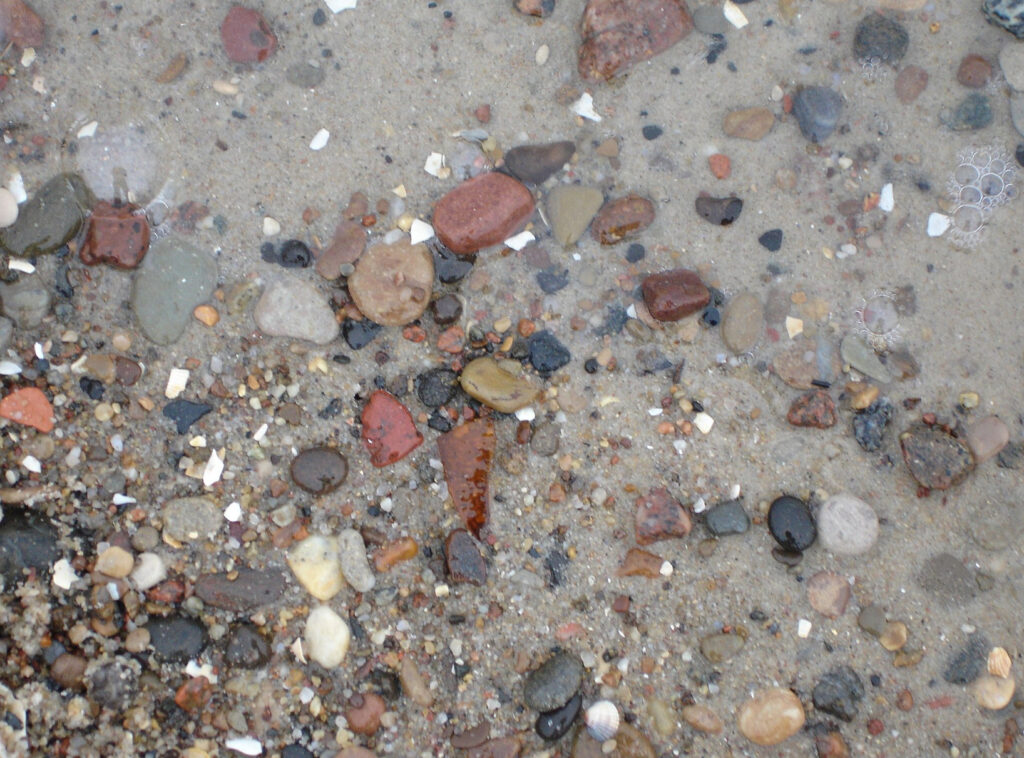
The Curonian Spit National Park in Lithuania is dotted with charming towns and villages, each offering unique attractions and a glimpse into the region’s cultural and natural heritage. Here are some of the most interesting ones:
1. Nida
• Highlights:
• Known as the cultural and artistic heart of the Curonian Spit.
• The Parnidis Dune, with its impressive sundial, offers panoramic views of the dunes and sea.
• The Thomas Mann Memorial Museum, once the summer home of the Nobel laureate, showcases his connection to the region.
• Traditional fishermen’s houses with colorful facades and carved weathervanes.
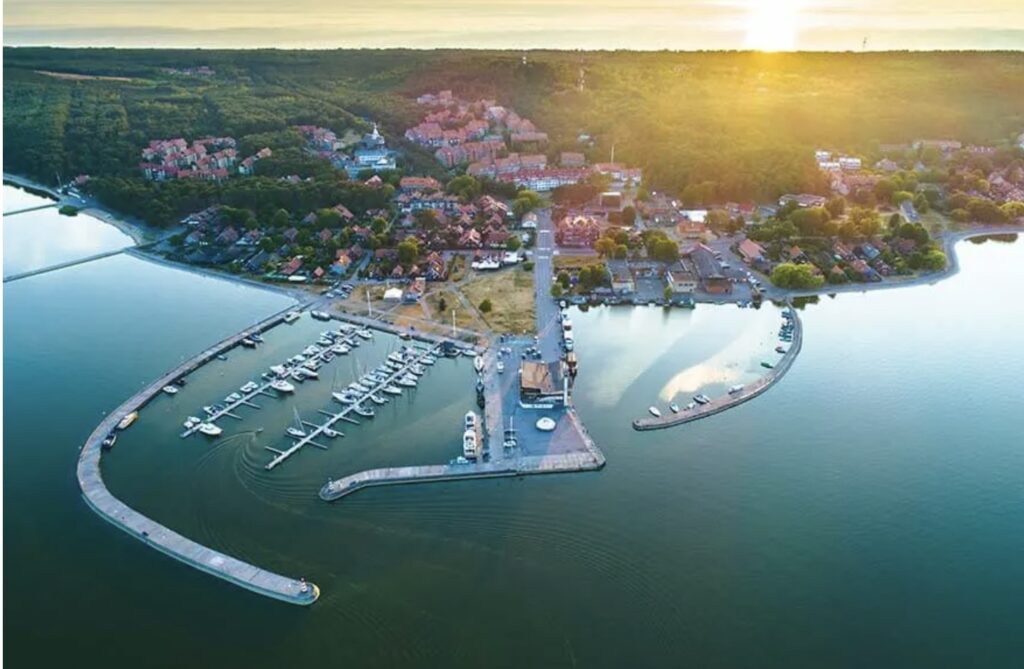
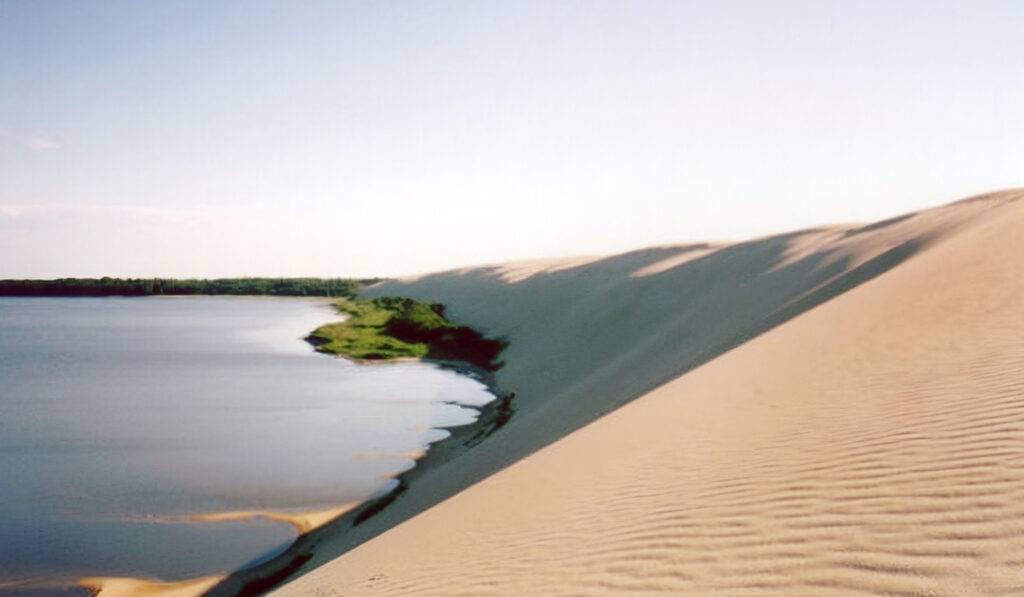
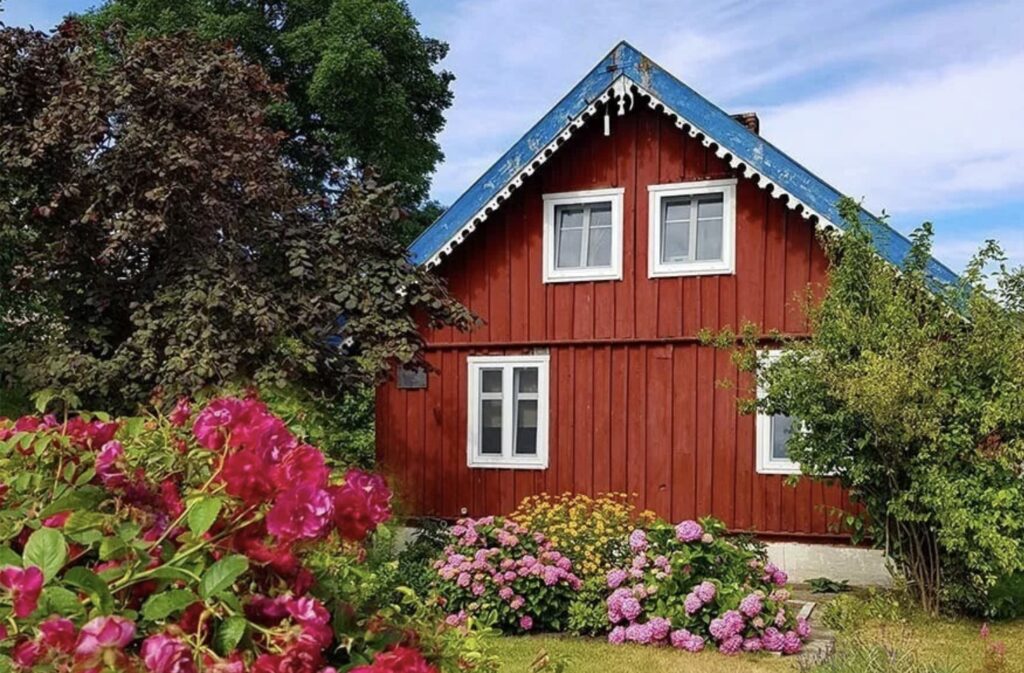
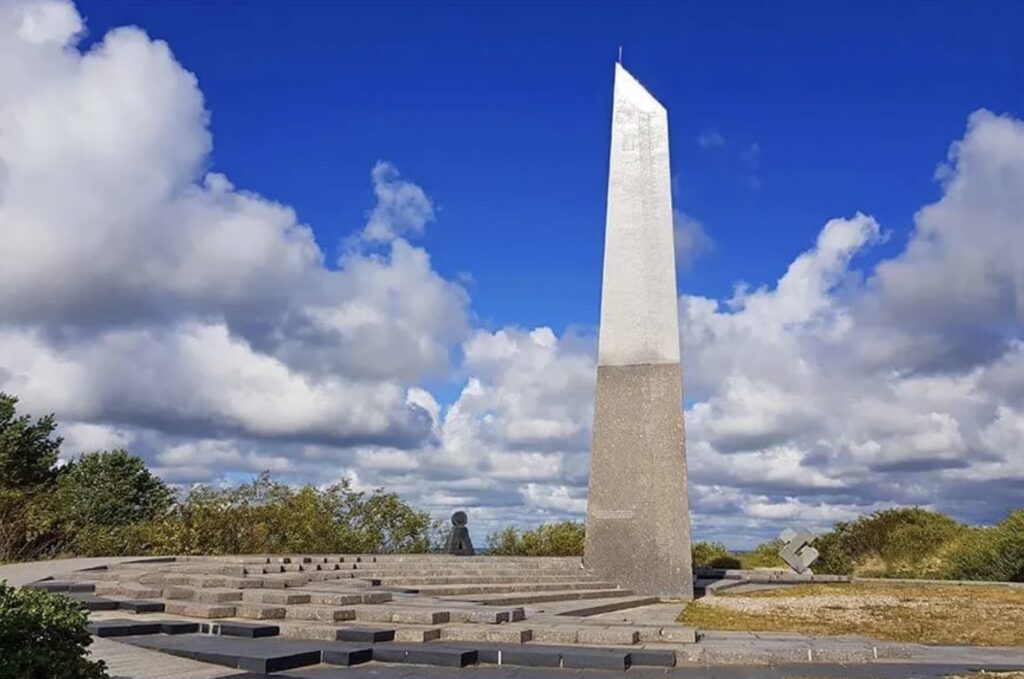
2. Juodkrantė
• Highlights:
• The Hill of Witches, a forested trail featuring wooden sculptures inspired by Lithuanian folklore.
• The Dead Dunes, an area of dramatic shifting sands and buried villages.
• Juodkrantė is one of the oldest settlements on the spit, with a serene atmosphere and well-preserved traditional architecture.
• Known for its association with amber fishing and cormorant colonies.
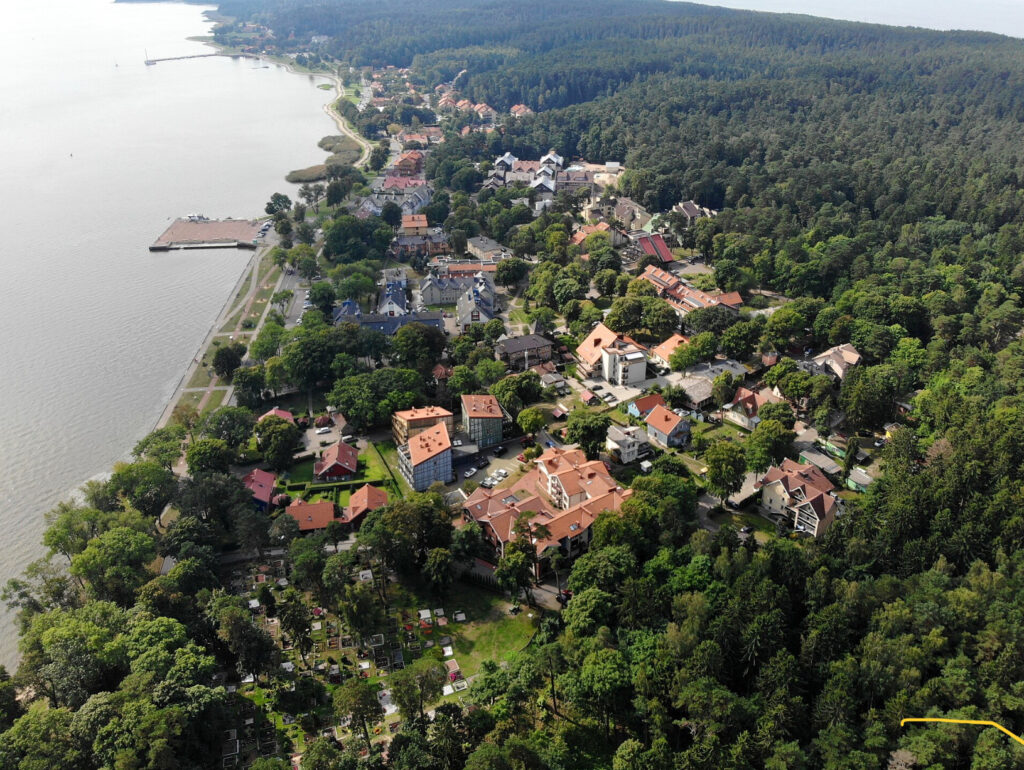
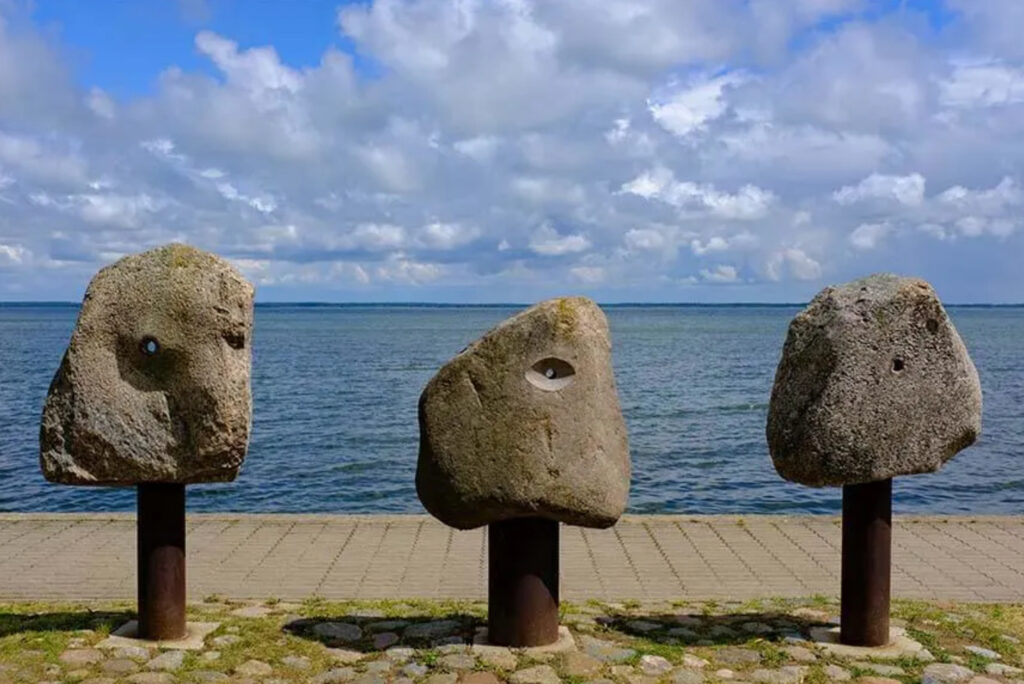
3. Pervalka
• Highlights:
• A quiet village known for its unspoiled nature and peaceful ambiance.
• The Lighthouse of Pervalka, located on a small island in the Curonian Lagoon, offers picturesque views.
• Close proximity to the Dead Dunes, a UNESCO-listed site.
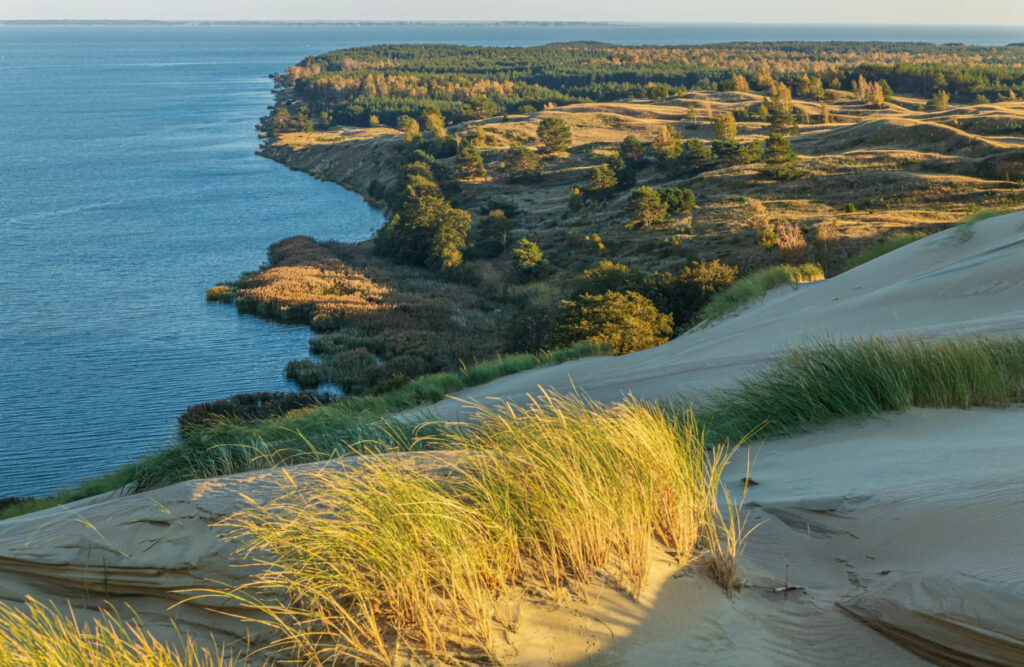
4. Preila
• Highlights:
• A small, tranquil fishing village surrounded by forest and dunes.
• Excellent starting point for hiking or cycling through nearby dune landscapes.
• Opportunities for kayaking or fishing in the Curonian Lagoon.
5. Smiltynė
• Highlights:
• The gateway to the Curonian Spit from Klaipėda, accessible by ferry.
• Home to the Lithuanian Sea Museum and Dolphinarium, a must-visit for families.
• Offers lovely beaches and short walking trails for visitors arriving on day trips.
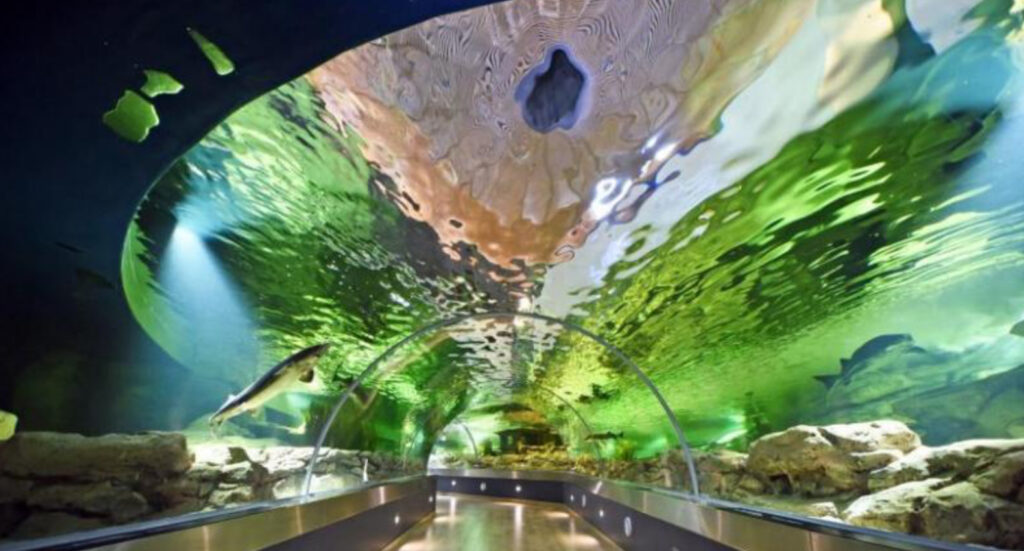
6. Klaipėda (Gateway Town)
• Highlights:
• While not on the spit, Klaipėda is the main access point via ferry.
• The Old Town features cobblestone streets, half-timbered buildings, and a maritime museum.
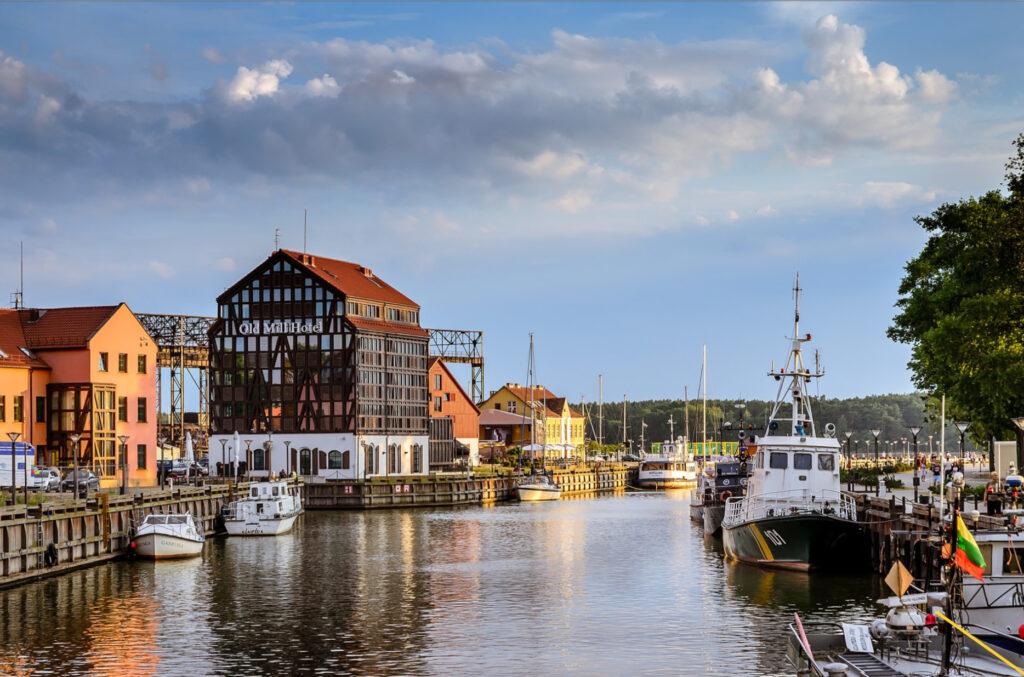
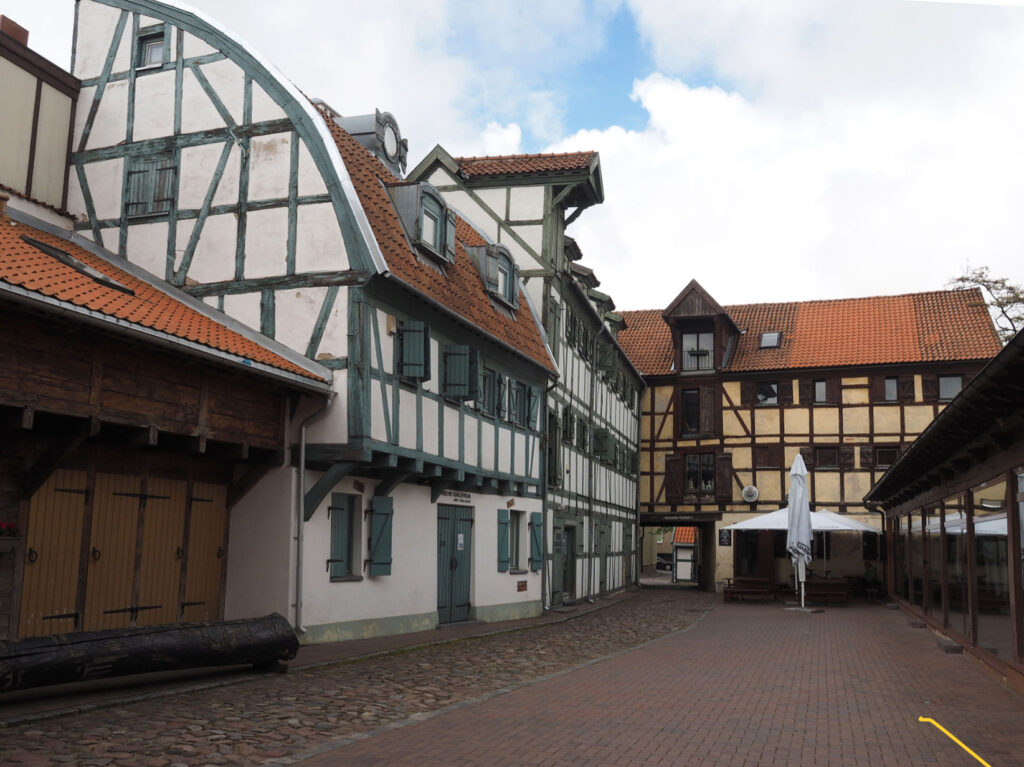
Each Village’s Unique Appeal
• Nida: Best for cultural and artistic experiences.
• Juodkrantė: Ideal for folklore, amber, and nature exploration.
• Pervalka: Great for tranquility and scenic beauty.
• Preila: A hidden gem for nature and lagoon activities.
• Smiltynė: Perfect for short visits and family-friendly attractions.
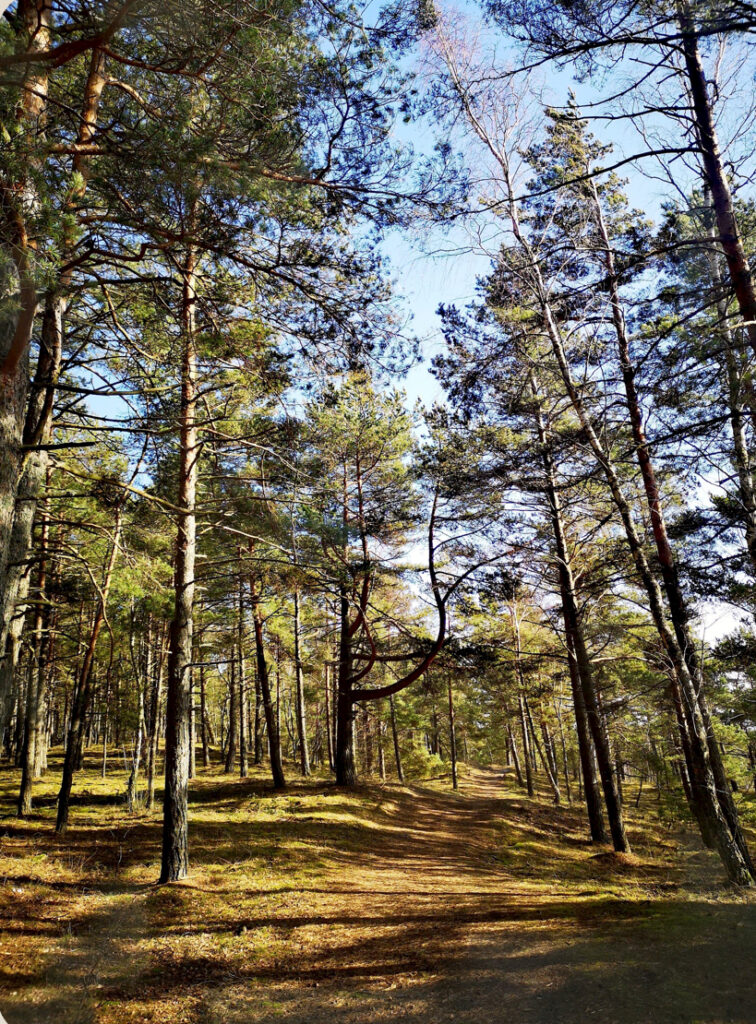
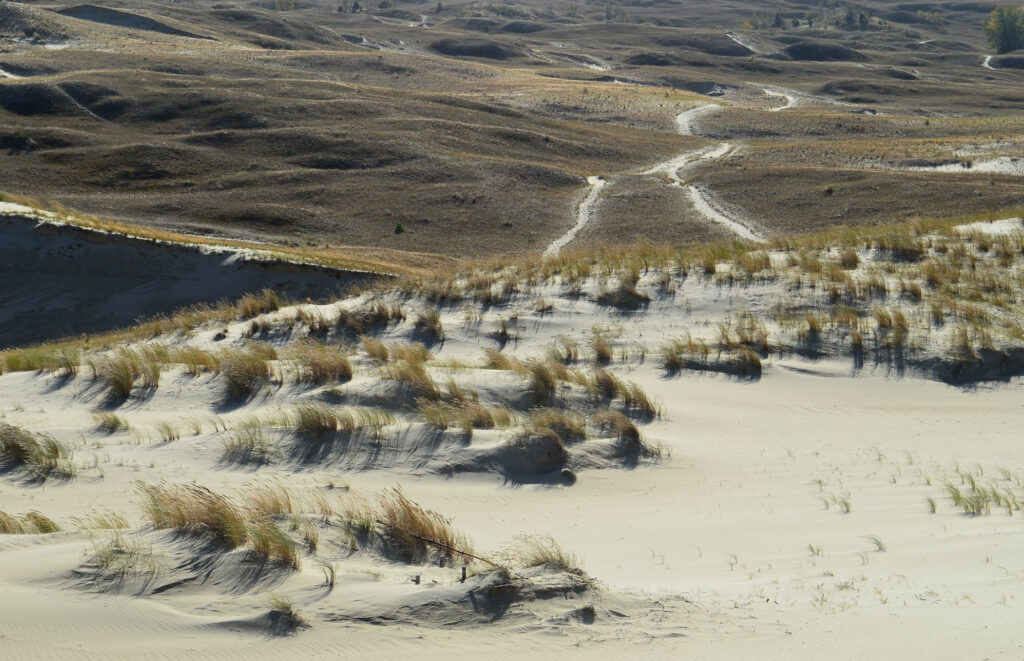
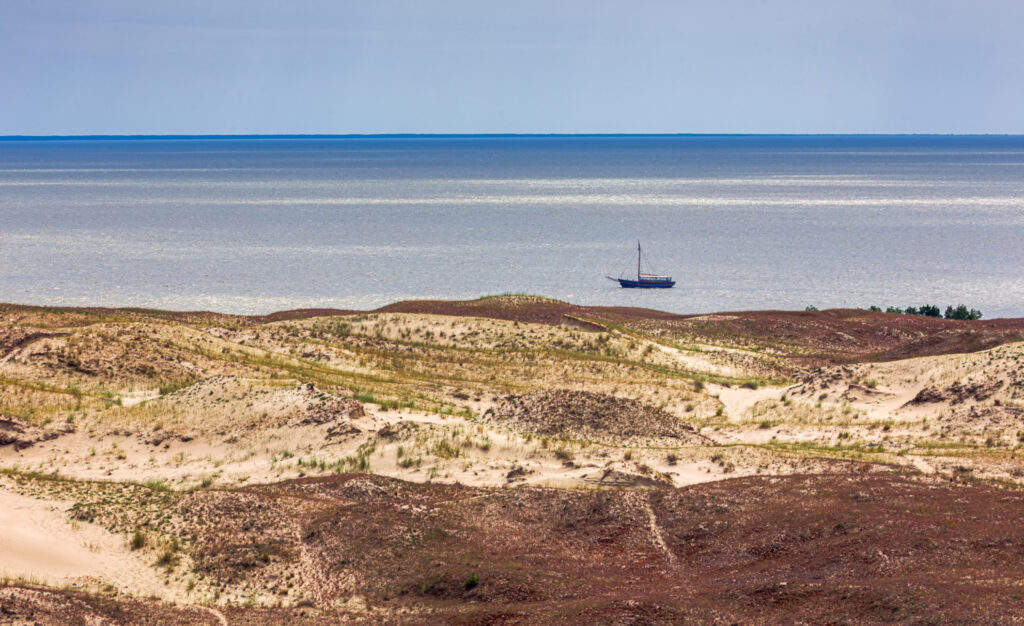
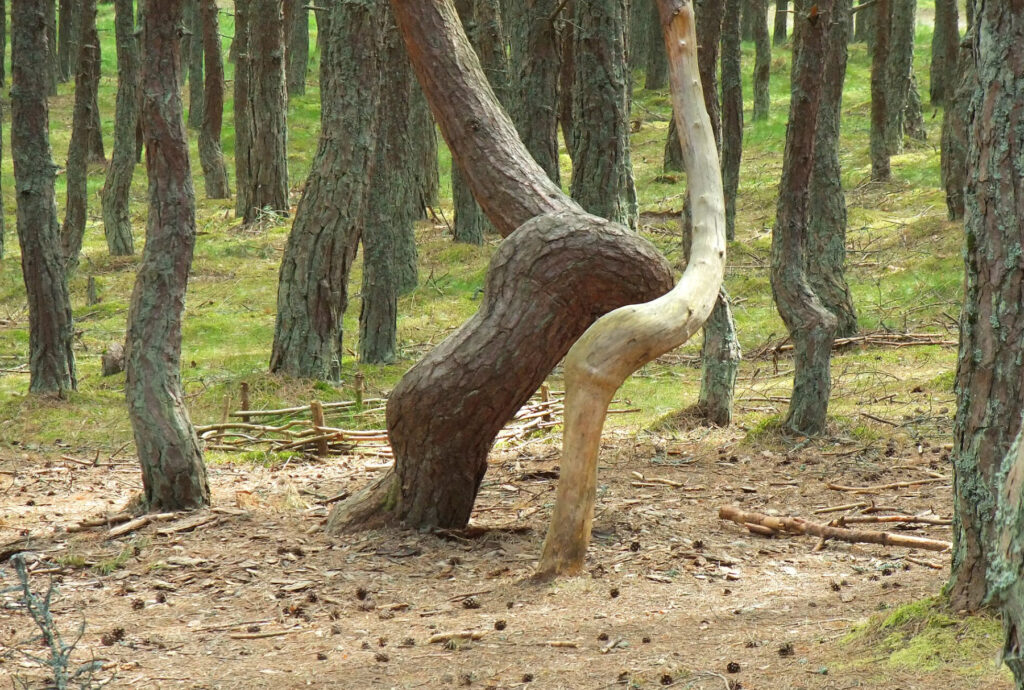
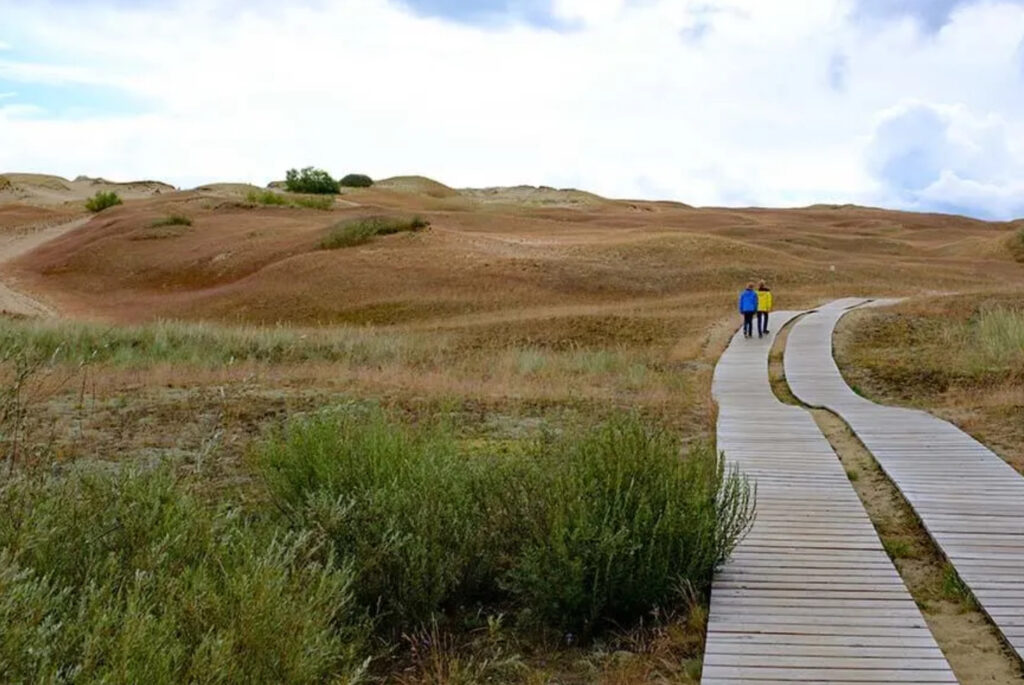
Visiting the Curonian Spit National Park in Lithuania offers a range of activities that highlight its unique natural beauty, cultural heritage, and biodiversity. Here are some suggested activities:
Nature Exploration
1. Hiking and Walking Trails:
• Explore the Parnidis Dune near Nida, one of the most impressive sand dunes, offering panoramic views of the Baltic Sea and Curonian Lagoon.
• Take the Dead Dunes Trail near Pervalka to see the remnants of ancient villages buried by shifting sands.
• Walk the Raganu Kalnas (Hill of Witches) trail in Juodkrantė, a forested area filled with wooden sculptures inspired by Lithuanian folklore.
2. Birdwatching:
• Visit the park during spring or autumn migration to witness thousands of birds, as the spit is part of the East Atlantic Flyway.
• The Vente Cape Ornithological Station, near the spit, is ideal for spotting migratory species.
3. Beach Relaxation:
• Enjoy the pristine sandy beaches along the Baltic Sea. These are perfect for swimming, sunbathing, or simply enjoying the tranquil setting.
4. Cycling:
• Rent a bike and ride along the Curonian Spit Bike Trail, a well-maintained route that connects villages and passes through forests, dunes, and coastal areas.
Cultural and Historical Experiences
1. Visit Nida:
• Explore the Thomas Mann Memorial Museum, dedicated to the Nobel laureate who spent summers in Nida.
• Admire traditional Kuršių Nerija fishermen’s cottages with their brightly colored facades and carved wooden weathervanes.
2. Hill of Witches:
• Discover dozens of wooden sculptures depicting mythical creatures and characters from Lithuanian folklore on this enchanting trail in Juodkrantė.
3. Amber Galleries:
• Learn about the region’s amber heritage by visiting local amber workshops and galleries, where you can see (and purchase) jewelry and carvings.
4. Ethnographic Cemetery and Weathervanes:
• Visit the cemetery in Nida to see the unique tombstones decorated with traditional wooden weathervanes, a hallmark of the region’s maritime culture.
Active Adventures
1. Dune Sandboarding:
• Try sandboarding or sledding on designated dunes for a thrilling experience.
2. Water Sports:
• Engage in kayaking or paddleboarding on the calm Curonian Lagoon.
• Windsurfing and kiteboarding are popular on the lagoon side of the spit.
3. Fishing:
• Join a traditional fishing trip to experience the lifestyle of the local fishing communities.
Wildlife and Ecology
1. Nature Watching:
• Visit the Grey Dunes Reserve to see unique flora and fauna that thrive in this harsh, sandy environment.
• Spot seals or other marine life along the Baltic coastline.
2. Educational Nature Walks:
• Participate in guided tours to learn about the history of the dunes and the reforestation efforts that shaped the modern landscape.
Seasonal Activities
1. Winter Adventures:
• In winter, enjoy cross-country skiing or walking through snow-covered forests and dunes.
2. Local Festivals:
• Attend festivals like the Nida Jazz Festival or traditional celebrations showcasing the region’s culture and folklore.
Photography and Art
1. Photography:
• Capture the dramatic contrasts of dunes, forests, and the sea. Sunrise and sunset over the dunes are particularly breathtaking.
2. Art Inspiration:
• Join painting or sketching workshops in Nida, a town historically associated with artists’ colonies.
These activities make the Curonian Spit National Park a well-rounded destination for nature enthusiasts, history buffs, and adventure seekers alike.
